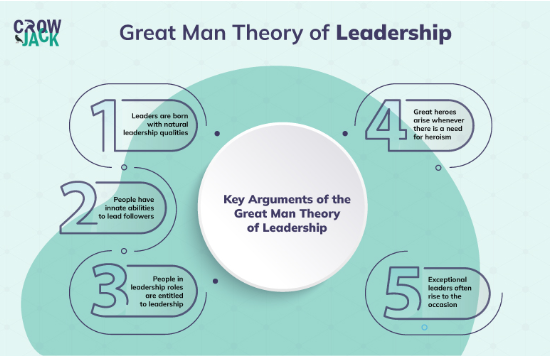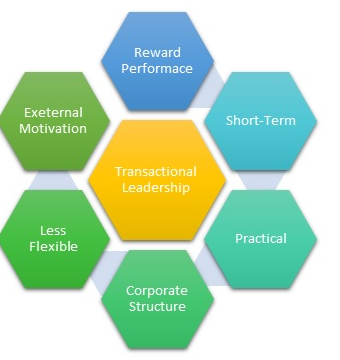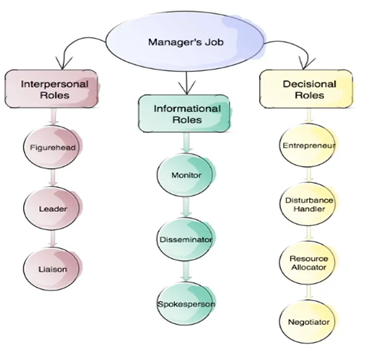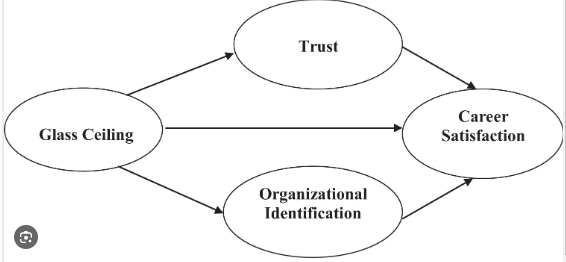$20 Bonus + 25% OFF CLAIM OFFER
Place Your Order With Us Today And Go Stress-Free
This report will look at the significance of leadership in global business through various measures and perspectives. It has been observed that leadership is the most effective and useful factor in providing the employee with a purpose to achieve the organizational goal. Also, leadership can motivate teammates to a great extent to work beyond their responsibilities to obtain the best outcome.
In this report, the author will examine the essentiality of leadership style in global business management. Leadership styles broadly assist the leaders in executing the business plan in the global market while focusing on accomplishing the business objectives strategically when considering the stakeholder's expectations (Wen et al. 2019).
This report hugely aims to discuss the global operations of Microsoft elaborately and explicitly. Moreover, this report also involves insights into contemporary leadership theories that can aid Microsoft’s organizational workflow.
Furthermore, it has also critically evaluated the functions of the three different leadership models that influence Microsoft's global organizational performance. Also, this report has selected four major sources of leadership power to analyze the contributions of leaders in global business.
Furthermore, this report has given insights into the critical evaluation of gender and culture that effectively impact the leadership within the organizational infrastructure.

Figure 1: Microsoft company.
(Source: thptkyanhht.edu.vn., 2023)
In this report segment, the author explores the details of Microsoft company by explaining the context. Microsoft was founded on 4th April 1975, and the founders of Microsoft were Bill Gates and Paul Allen. Microsoft company offers various services for the sake of the customers.
The services are Skype, SharePoint, MS Word, MS PowerPoint, Viva, Microsoft Stream, Outlook, Excel, Onedrive etc. Microsoft's target customers are people aged 16 and above, male and female, and people from urban and rural countries. They also target students, professionals, businessmen, famous personalities, mediocre people, and others to increase sales.
Microsoft is a new, distinguished and well-recognized platform, having a market share of $2.794 Trillion which is high compared to the year 2022 (companiesmarketcap.com., 2023). It has been explored that the number of employees in Microsoft has increased by 11.04% from the year 2020, and now, in 2023, it stands at 221,000.
Also, it has 208 office locations in the US for business operations. The sales revenue of Microsoft is $218.310B in the year 2023, which has increased from the previous year (macrotrends.net., 2023).

Figure 2: Great man leadership theory.
(Source: crowjack.com., 2022)
According to Uslu (2019), the great man leadership theory plays a crucial role within the organizational infrastructure to motivate the leaders to operate the workforce with great efficiency. Also, it is essential to make the leaders aware of their power within Microsoft company.
On the contrary, Mouton (2019) opined that Great Man leadership theory is essential in emphasizing the significance of the interpersonal characteristics of leaders. With Microsoft, this theory has assisted leaders in motivating and inspiring their team members through their vision, courage, and charisma.

Figure 3: Transformational leadership model.
(Source: managementstudyguide.com., 2023)
According to Asbari et al. (2020), Microsoft has significantly utilized the transformational leadership theory to promote the guidance of leaders to employees. Transformational leadership theory has numerously assisted leaders in creating a particular vision to operate the business and guiding the company's team members.
In contrast, Mach et al. (2022), opined that transformational leadership theory encourages innovation to improve the efficacy of the workforce. Microsoft has broadly benefited from the utilization of the four attributable theories by being empathetic towards the employees to inspire them to work hard beyond the requirements to achieve great success.

Figure 4: Situational leadership theory.
(Source: santanubhattacherjee.medium.com., 2020)
According to Wuryani et al. (2021), situational leadership theory is the most effective to control any company's possible outcomes. The leaders of Microsoft have applied this theory, and they have been able to influence the organizations in all directions effectively.
On the other hand, Seidel et al. (2019), stated that situational leadership predominantly helps control any cryptic situation with the strong leadership skills of leaders. Also, at Microsoft company, the leaders make the appropriate decisions to increase sales by communicating, sharing different ideas with employees, and encouraging them to accomplish what is needed.

Figure 5: Transactional leadership Theory.
(Source: mbaskool.com., 2023)
According to Richards (2020), transactional leadership theory is one of the greatest theories that aims to achieve the desired goal based on a strict management structure and employee motivation. This transactional leadership theory has improved the productivity of the company by giving rewards to the team members to put hard work into the organizational development. In contrast, as per Cho et al. (2019), transactional leadership theory is the most essential theory that reduces organizational error. Along with this, transactional leadership theory has helped Microsoft achieve short-term goals by accurately performing the tasks.

Figure 6: contingency leadership theory.
(Source: vantagecircle.com., 2023)
Deshwal and Ali (2020) stated that contingency leadership theory is another critical theory for ensuring the growth of any organization. This theory has made Microsoft employees more creative in developing new ideas and boosting innovations.
In contrast, as per Samul (2020), leaders can increase workplace flexibility by following the contingency leadership theory. Within Microsoft's organizational infrastructure, the leaders have successfully built relationships with the employees and prepared alternative strategies according to the situation.
In this study, the applied leadership theory in Microsoft company has been explored in the context of the study. The importance of transformational leadership theory within the organizational framework has been observed.
It has also evaluated utilizing transformational leadership theory to change employees by providing valuable insights for the organizational goal (Kartika and Gunawan, 2022). For example, Microsoft uses transformational leadership to create an innovative culture in the workplace. This resulted in the formation of Azure supercomputers, potent AI-driven supercomputers.
Also, Microsoft has applied the theory of situational leadership to develop the situation and handle any problematic circumstances within the company (Khan, 2020). For example, Microsoft has been strictly challenged by cyber-attacks and for this, Microsoft has launched a modern data governance strategy to boost the security of data and optimize data to use at anyway.
According to Karácsony and Czibula, (2020), based on Kotter's (1990) leadership model, developing a vision for the identified organization is the utmost feature that greatly impacts the global organization of Microsoft company. Usually, vision refers to future views with some explicit or implicit commentary for which individuals can strive to create a bright future for the global organization.
Initially, this particular function has helped Microsoft by placing a premium on customer-centric innovations through developing skills. On the other hand, as per Holopainen et al. (2019), one of the remarkable functions of Kotter’s (1990) leadership model is communicating the change vision.
It is known that a great vision can serve a useful purpose in any global organization if it can understood by a few key people. A proper vision of Microsoft has helped in understanding the company’s goal and direction, which Microsoft has possibly achieved to reach desirable success through motivation.
Holopainen et al. (2019), stated that consolidation gains and the production of more change are other remarkable features of Kotter’s (1990) leadership model. In this case, the transformation of Microsoft has taken place in a series of projects, which are made of other smaller projects. For this matter, having proper leadership and management, goals have been achieved, and excess interdependence has diminished inside the organization.

Figure 7: Kotter (1990) of leadership model.
(Source: Researchgate.net, 2023)
According to Szczepańska-Woszczyna, (2020), based on Zaleznik's (1977) leadership model, it can be said that managers acting to limit choices became the fundamental characteristic or function involved in developing the leadership style in a global organisation like Microsoft. This function implies the manager’s act or effectiveness that can impact the organisation's performance or health and influence all areas of employee experiences.
Thus, this function has assisted Microsoft in various aspects, such as engagement, growth development and productivity.
On the other hand, as per Saiti (2021), leaders' effectiveness is one of the other key features of this leadership model, which can positively impact global organizational performances. Here it has been indicated that leaders are acting as artists to manage the entire performance of Microsoft company.
This particular function of leadership has the power to tolerate chaos and lack of structure in the organization, which is very relevant. Creating a suitable and conflict-free work environment, this feature has accelerated the organizational performance of Microsoft company.
Collins et al. (2023), opined that, in Zaleznik's view of leadership, both leaders and managers have equal importance and contribution to the global organization to reach its ultimate goals or objectives.
In Microsoft company, leaders have contributed by advising change and new approaches and by raising employees' commitment. In contrast, managers have contributed by advocating solidity and status circumstances, determining how work will be accomplished.
According to Tervaskari, (2023), based on Mintzberg’s 10 roles, it can be said that figureheads in interpersonal roles of a manager’s job are the significant features of the particular leadership model. This feature simply indicates the importance of playing the role of the manager in cases of social, ceremonial and legal responsibilities.
Primarily, this feature is the source of inspiration for employees, for which employees can look up to managers with authority and as figureheads. This feature is also tasked with sharing Microsoft organization’s mission and values.
On the other hand, Opar and Mwasiaji, (2023), stated that one of the other essential features is monitoring informational roles in a manager’s job in a global organization.
This feature has helped Microsoft by reducing the number of levels in an organization by providing managers with accompanying information to supervise larger numbers of workers and help in decision-making.
As per Dsouza and Panakaje, (2023), statement, disturbance handling in the decisional roles of a manager’s job is one of the dominant attributes. This function of the manager has assisted the manager in mediating organizational disputes. Hence, this function has prevented disturbances from rising that disrupt stable ecosystems and explicit species habitat in Microsoft.

Figure 8: Mintzberg’s 10 Roles Leadership Model.
(Source: Medium.com, 2023)
According to Del Rio et al. (2020), the expert power of leaders comes from knowledge or expertise, and it has greatly impacted Microsoft's global organization. This particular leadership power has enhanced the confidence level of leaders in working under experts. Also, this power has directly assisted businesses and organizations’ notoriety.
On the other hand, as per Al Harrasi et al. (2020), initially, it can be said that expert power is one of the most important abilities for which employees can, regardless of seniority, showcase competency in a subject or situation. For instance, when no one is there in Microsoft organization to run a particular software program, specific employees can be prioritized for having expert power in that situation.
Rickley, (2023), opined that when leaders and employees work with expert knowledge and unique skills, they can create an efficient and positive workplace with alliances for which, in Microsoft organization, employees have contributed to retaining their leaders for a long time.
According to Bochatay et al. (2021), the ultimate source of the Referent power of leaders is how others perceive them in the global organization. It has been evaluated that a referent leader needs to have specific expertise for which they do not belong in a professional position. For this causes, referent leaders' influence comes from how they are discerned or perceived.
Predominantly, referent power has a great significance or effect on employees' performance and satisfaction. Monje-Amor et al. (2020) stated that employees' major contribution is creating and sustaining leaders at a global level of Microsoft organization. In this case, employees observed the manager’s behavior and acted carefully as they believed their manager acted in the same situation.
Based on this perspective, employees have made decisions in order to create or sustain their specific leaders. On the other hand, Buchanan and Badham, (2020), opined that, in this aspect, after observing leaders' activities or actions, employees can refer to what they believe the manager would do and do the same. For instance, Microsoft has sustained its leaders through creativity and observing the manager's behavior.
According to Savini et al. (2020), the source of position power is three bases: reward, legitimacy, and coercion. Positional power has greatly impacted Microsoft by allowing managers to dismiss or hire new staff. This leadership power has offered rewards or punishments to the employees and is also involved in providing directions and instructions to all employees.
As per Kim and Beehr, (2020), in this case, employees believe in the manager that authority to direct their actions can majorly impact the global organization. In this circumstance, they show interest or willingly comply with those requests. In this way, employees can contribute to global organizational performance through positional power.
On the other hand, Rickley, (2023), opined that employees usually have observed Microsoft leaders engaged in working to increase employees' personal power, persuasiveness and competency, which is involved in enhancing their effectiveness, showing interest in sustaining leaders long time period.
According to Zhang and Carpano, (2023), it has been evaluated that personal power generally depends on the position one holds in an organization and on individual skills or expertise. With this leadership power, leaders can influence their followers to achieve high productivity and complete the set goals in the organization. With the help of this personal power of skills or expertise, leaders can promote good work relationships and employee gratification.
On the other hand, as per Yue et al. (2023), personal power includes employees' motivational aspects when employees obtain some rewards or the company grants tokens as a form of recognition and appreciation to employees in return for their good performance.
For instance, in Microsoft company, due to the same reason, employees have shown a major likelihood of retaining the same manager so longer. As per Lee et al. (2023), in Microsoft company, as the manager influences leading the entire performance of employees, they have slowly built deeper trust and loyalty with a team which can conduct towards retaining the leader of the company to work together with great inspiration.
In this study segment, the effectiveness of gender has been elaborately discussed through discussion. It has been explored that many female leaders follow the democratic leadership style to lead the team to increase job satisfaction and improve problem-solving skills within the organisational infrastructure. Moreover, it can increase productivity and sales and encourage team members to work beyond their responsibilities to reach the desired goal.
On the other hand, male leaders follow the autocratic leadership style to promote business productivity. This particular leadership style also helps the leaders to think quickly to pass any orders to the employees to execute any type of work effectively. By applying this leadership style, the leaders provide explicit communication that assists in reducing the stress of the employee.

Figure 10: Glass ceiling effect.
(Source: journals.sagepub.com., 2020)
It has been explored that the Glass ceiling effect of leadership impacts the organization by noticing the lack of diversity at the leadership level. It also looks at the work of the managers in ignoring their goals and not objecting to the managers for not giving any challenging work to the employees.
The Leadership Labyrinth suggests that in any organization, there is only a barrier for leadership positions and executives that resist their workflow (Brown and Flood, 2020). It also positively impacts leadership as it provides appropriate ideas to surpass any barrier or strive through the difficult journey.
It is considered to be the most significant factor that impacts organizations. Leadership effectiveness is the most successful practice of personal motivation by a leader or manager that leads to the organisation's ultimate success. It measures the overall company performance towards success, profit rate, organizational culture, employee gratification, and customer satisfaction.
Culture plays a predominant role in influencing the leadership within any organization. It has been explored that negative culture adversely impacts the business organization by creating conflict and obstructing the natural workflow. It can be perpetrated through various measures, such as manipulating other employees to disturb their focus.
Along with this, positive leadership can overcome the negativity of culture. Adding to this, culture can also positively impact an organization by maintaining business cooperation and enhancing the trust of the team members. Moreover, it can effectively control disagreements in the workplace and represents more fruitful and innovative decision-making.

Figure 11 : Hofstede’s Cultural Dimensions Theory.
(Source: iedunote.com., 2023)
The Hofstede model has great significance in developing the cultural model regarding the beliefs and values of working goals. It efficiently identifies the external factors for the sake of any business development; at the same time, this model helps to provide important information to the customers and the business developer about the differences in marketing in countries. Also, this model showcases how to control difficulties and manage them effectively within the organizational infrastructure.
A global project is the most essential factor in assisting the leaders in further improving the organization. It has positively impacted leadership by enabling leaders to identify the essentiality of cultural consideration to obtain fruitful results in the workplace. This model greatly assists in learning the different cultures and diversifying the leadership style to apply them to various types of cultures.
The impacts of culture clusters on leadership can be elaborated in multifaceted ways. A culture cluster is a group of nations working under the organization as an employee shares a similar religion, economic position and history (Garfield et al. 2020). It has been observed that culture clusters improve the skills and knowledge of every employee by offering strong problem-solving ideas and boosting the capability of every employee to achieve prompt success.
Based on the entire context, enormous aspects of leadership perspectives have been discussed thoroughly. The effectiveness or usefulness of the leadership model in the identified company, Microsoft, has been articulated.
A proper framework or purpose of the identified company has been mentioned. Various significance has been evaluated after critical analysis of five contemporary leadership theories, such as Great Man Theory, Transformational Leadership Theory, Situational Leadership Theory, Transactional Leadership Theory, and Contingency Leadership Theory.
Based on this negotiation of diverse theories, it has been perceived how flexibility, and transparency or work performance rely on using a variety of leadership theories in a global organization to generate the entire performance smoothly.
Furthermore, the functions of three types of different leadership models, such as Kotter (1990), Zaleznik (1977) and Mintzberg’s 10 roles, have been justified, which has directly influenced the global organizational performance of the MNC company of Microsoft.
Based on the negotiation of four different kinds of leadership power of Expert power, Reference power, Position power, and Personal power’s contribution in leading the performance leaders have been identified.
Initially, this power shows how employees can retain or sustain leaders in a company that has been evaluated. Along with these perspectives, the effectiveness of gender and culture variables in leadership has been justified. Thus, from these aspects, it can be said that leadership is the most important role that can accelerate a global organization’s productivity, innovation, creativity, and sustainability.
Al Harrasi, N., Kian, M.W. and Karim, A.M., 2020. Assessing Employee’s Perception of Relationship between Expert Power and Employee Productivity Behavior at Selected Muscat Governmental Organizations, Sultanate of Oman. Sciences, 10(10), pp.32-48.
Asbari, M., Santoso, P.B. and Prasetya, A.B., 2020. Elitical and antidemocratic transformational leadership critics: is it still relevant?(A literature study). International Journal of Social, Policy and Law, 1(1), pp.12-16.
Bochatay, N., Kuna, Á., Csupor, É., Pintér, J.N., Muller-Juge, V., Hudelson, P., Nendaz, M.R., Csabai, M., Bajwa, N.M. and Kim, S., 2021. The role of power in health care conflict: Recommendations for shifting toward constructive approaches. Academic Medicine, 96(1), pp.134-141.
Brown, P.C. and Flood, J., 2020. Conquering the professional learning network labyrinth: what is required from the networked school leader?. School Leadership & Management, 40(2-3), pp.128-145.
Buchanan, D. and Badham, R., 2020. Power, politics, and organizational change. Sage.
Cho, Y., Shin, M., Billing, T.K. and Bhagat, R.S., 2019. Transformational leadership, transactional leadership, and affective organizational commitment: a closer look at their relationships in two distinct national contexts. Asian Business & Management, 18, pp.187-210.
Collins II, R.T., Algaze, C. and Posner, B.Z., 2023. The Leadership/Management Concept Scale: differentiating between actions constituting leadership and management. Leadership & Organization Development Journal, 44(5), pp.657-677.
companiesmarketcap.com., 2023., Market share of Microsoft in 2023. https://companiesmarketcap.com/microsoft/marketcap/#:~:text=Market%20cap%3A%20%242.792%20Trillion,cap%20according%20to%20our%20data.
Del Rio, D.D.F., Sovacool, B.K., Bergman, N. and Makuch, K.E., 2020. Critically reviewing smart home technology applications and business models in Europe. Energy Policy, 144, p.111631.
Deshwal, V. and Ali, M.A., 2020. A systematic review of various leadership theories. Shanlax International Journal of Commerce, 8(1), pp.38-43.
Dsouza, A. and Panakaje, N., 2023. Factors Affecting Women Entrepreneurs’ Success: A Study of Small and Medium-Sized Enterprises-A Review. International Journal of Case Studies in Business, IT and Education (IJCSBE), 7(2), pp.51-89.
Garfield, Z.H., Syme, K.L. and Hagen, E.H., 2020. Universal and variable leadership dimensions across human societies. Evolution and Human Behavior, 41(5), pp.397-414.
Holopainen, K., Holopainen, T., Kallio-Gerlander, J., Norström, A. and Roslöf, J., 2019. Leading and communicating change in an engineering faculty merger. In The 15th International CDIO Conference: Proceedings-Full Papers. CDIO Initiative.
Holopainen, K., Holopainen, T., Kallio-Gerlander, J., Norström, A. and Roslöf, J., 2019. Leading and communicating change in an engineering faculty merger. In The 15th International CDIO Conference: Proceedings-Full Papers. CDIO Initiative.
iedunote.com., 2023. Hofstede’s Cultural Dimensions Theory. https://www.iedunote.com/hofstedes-cultural-dimensions-theory
journals.sagepub.com., 2020. Glass ceiling effect. https://journals.sagepub.com/doi/10.1177/0306307020938976
Karácsony, P. and Czibula, A., 2020. Relationships between leadership style and organizational performance in the case of Hungarian Small and Medium-sized Enterprises. Polish Journal of management studies, 22(2), pp.201-214.
Kartika, R. and Gunawan, A.W., 2022. PENGARUH TRANSFORMATIONAL LEADERSHIP TERHADAP TURNOVER INTENTION GENERASI Z MELALUI INTERNAL COMMUNICATION DAN EMPLOYEE ENGAGEMENT. JOURNAL TRANSFORMATION OF MANDALIKA (JTM) e-ISSN 2745-5882 p-ISSN 2962-2956, 3(2), pp.121-141.
Khan, M.A., 2020. The impact of project management styles on digital transformation: A Case Study of an IT services company. International Journal of Project Management, 4(1), pp.1-9.
Kim, M. and Beehr, T.A., 2020. Job crafting mediates how empowering leadership and employees’ core self-evaluations predict favourable and unfavourable outcomes. European Journal of Work and Organizational Psychology, 29(1), pp.126-139.
Lee, M.C.C., Kee, Y.J., Lau, S.S.Y. and Jan, G., 2023. Investigating aspects of paternalistic leadership within the job demands–resources model. Journal of Management & Organization, pp.1-20.
Mach, M., Ferreira, A.I. and Abrantes, A.C., 2022. Transformational leadership and team performance in sports teams: A conditional indirect model. Applied Psychology, 71(2), pp.662-694.
macrotrends.net., 2023. Sales revenue of Microsoft in 2023. https://www.macrotrends.net/stocks/charts/MSFT/microsoft/revenue#:~:text=Microsoft%20revenue%20for%20the%20twelve,a%2017.96%25%20increase%20from%202021.
managementstudyguide.com., 2023. Transformational leadership model. https://managementstudyguide.com/types-of-power.htm
mbaskool.com., 2023. Transactional leadership Theory. https://www.mbaskool.com/business-concepts/human-resources-hr-terms/17820-transactional-leadership.html
Medium.com, 2023. Mintzberg’s 10 Roles Leadership Model. https://medium.com/taskworld-blog/mintzberg-model-10-different-roles-of-a-successful-manager-77f9d87b773c
Monje-Amor, A., Vázquez, J.P.A. and Faíña, J.A., 2020. Transformational leadership and work engagement: Exploring the mediating role of structural empowerment. European Management Journal, 38(1), pp.169-178.
Mouton, N., 2019. A literary perspective on the limits of leadership: Tolstoy’s critique of the great man theory. Leadership, 15(1), pp.81-102.
Opar, J.A. and Mwasiaji, E., 2023. Functional level strategies and performance of Safaricom Public Limited Company, Kenya. The Strategic Journal of Business & Change Management, 10(4), pp.1306-1318.
Researchgate.net, 2023. Kotter (1990) of leadership model. https://www.researchgate.net/figure/Kotters-change-model-Kotter-2017_fig1_327797500
Richards, A., 2020. Exploring the benefits and limitations of transactional leadership in healthcare. Nursing Standard, 35(12), pp.46-50.
Rickley, M., 2023. A Systematic Review of Power in Global Leadership. Advances in global leadership, pp.3-35.
Rickley, M., 2023. A Systematic Review of Power in Global Leadership. Advances in global leadership, pp.3-35.
Saiti, A., 2021. Is Strategic and Sustainable Leadership Synonymous With Effective Leadership?. Journal of Leadership, Accountability & Ethics, 18(1).
Samul, J., 2020. The research topics of leadership: Bibliometric analysis from 1923 to 2019. International Journal of Educational Leadership and Management, pp.116-143.
santanubhattacherjee.medium.com., 2020. Situational leadership theory. https://santanubhattacherjee.medium.com/my-take-on-situational-leadership-bee7bc439ab1
Savini, G., Hoffer, K.J., Balducci, N., Barboni, P. and Schiano-Lomoriello, D., 2020. Comparison of formula accuracy for intraocular lens power calculation based on measurements by a swept-source optical coherence tomography optical biometer. Journal of Cataract & Refractive Surgery, 46(1), pp.27-33.
Seidel, A., Saurin, T.A., Tortorella, G.L. and Marodin, G.A., 2019. How can general leadership theories help to expand the knowledge of lean leadership?. Production Planning & Control, 30(16), pp.1322-1336.
Szczepańska-Woszczyna, K., 2020. Management theory, innovation, and organisation: A model of managerial competencies. Routledge.
Tervaskari, A., 2023. Transforming manager role in the age of Artificial Intelligence.
thptkyanhht.edu.vn., 2023. Microsoft company. https://thptkyanhht.edu.vn/en/microsoft-beats-apple-to-be-the-most-valuable-company-in-the-world/
Uslu, O., 2019. A general overview to leadership theories from a critical perspective. Маркетинг і менеджмент інновацій, (1), pp.161-172.
vantagecircle.com., 2023. contingency leadership theory. https://blog.vantagecircle.com/contingency-leadership/
Wen, T.B., Ho, T.C., Kelana, B.W.Y., Othman, R. and Syed, O.R., 2019. Leadership styles in influencing employees’ job performances. International Journal of Academic Research in Business and Social Sciences, 9(9), pp.55-65.
Wuryani, E., Rodlib, A., Sutarsib, S., Dewib, N. and Arifb, D., 2021. Analysis of decision support system on situational leadership styles on work motivation and employee performance. Management Science Letters, 11(2), pp.365-372.
Yue, C.A., Thelen, P.D. and Walden, J., 2023. How empathetic leadership communication mitigates employees' turnover intention during COVID-19-related organizational change. Management Decision, 61(5), pp.1413-1433.
Zhang, B. and Carpano, D., 2023. Chromium as a tool of logistical power: A material political economy of open-source. Big Data & Society, 10(1), p.20539517231182399.
Are you confident that you will achieve the grade? Our best Expert will help you improve your grade
Order Now










